Cascais (pronounced “kesh-kysh” because in many cases the Portuguese pronounce “s” like “sh”) is a popular seaside vacation destination about 30 km west of Lisbon; a one-hour train ride. It’s the westernmost point in continental Europe. We stayed in a nice little one-bedroom vacation rental apartment that was a 15-minute walk (uphill) from downtown.
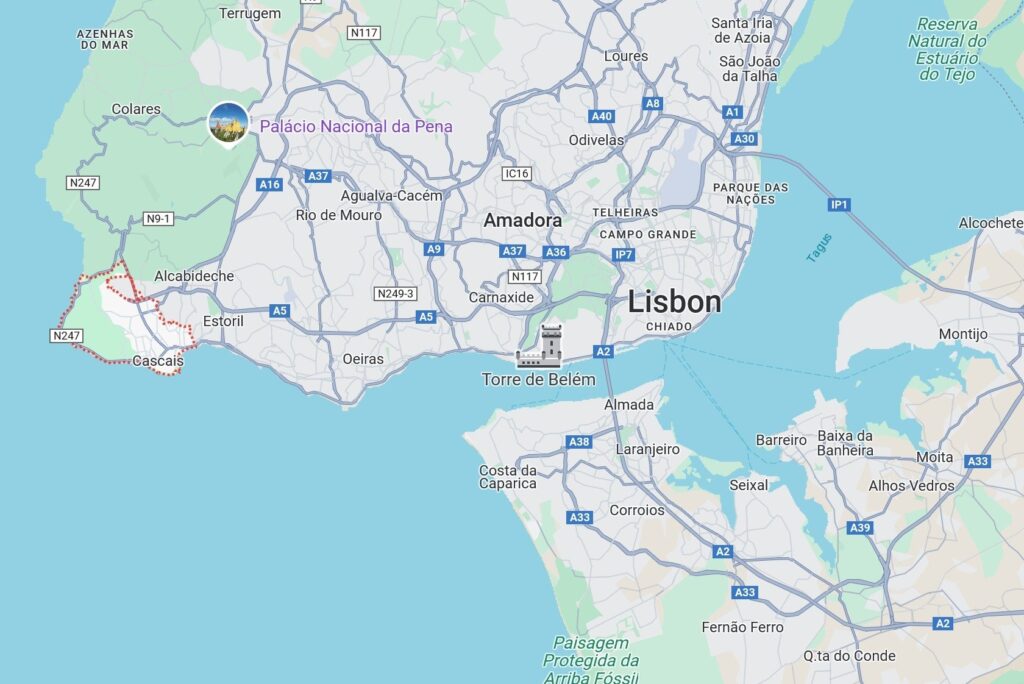
The area within a few blocks of the ocean is definitely touristy, with hotels, restaurants (most with sidewalk tables and menus in four languages), gift shops, etc. Given that Cascais is one of the more expensive places in Portugal, it caters to a middle- to upper-middle-class clientele.
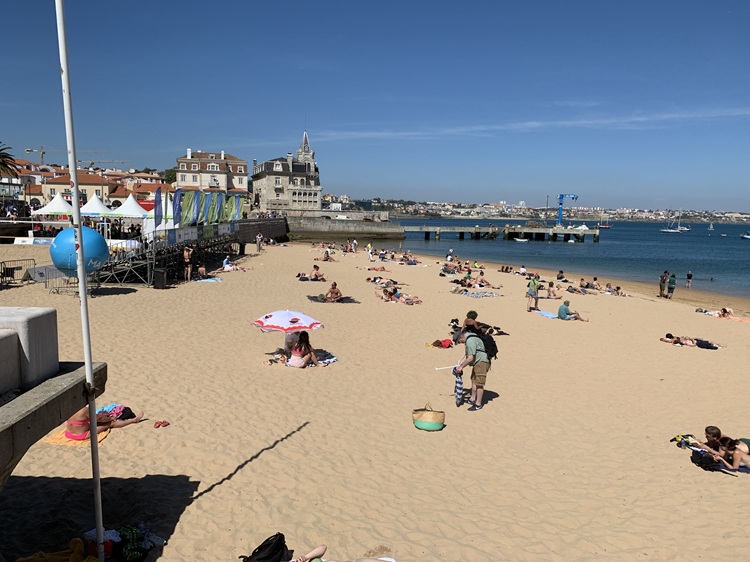
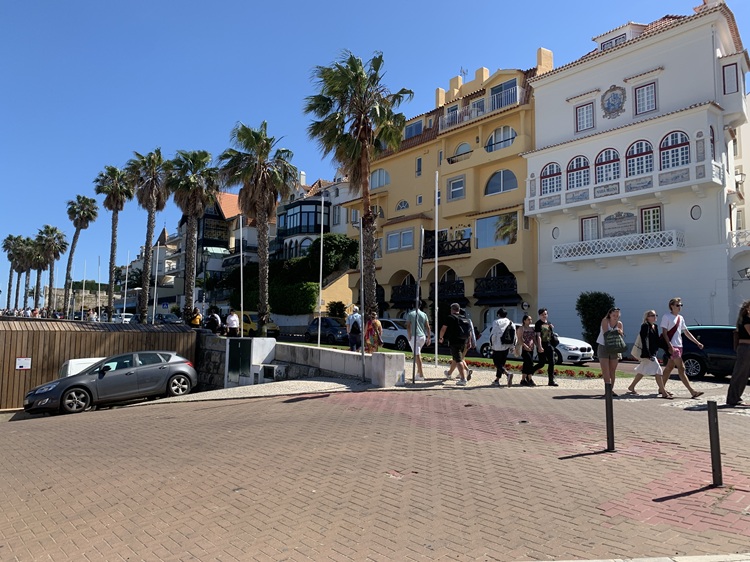
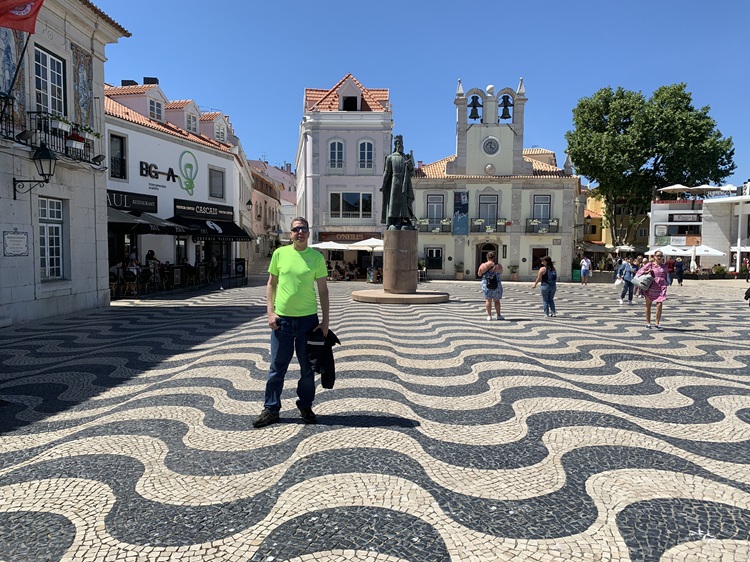
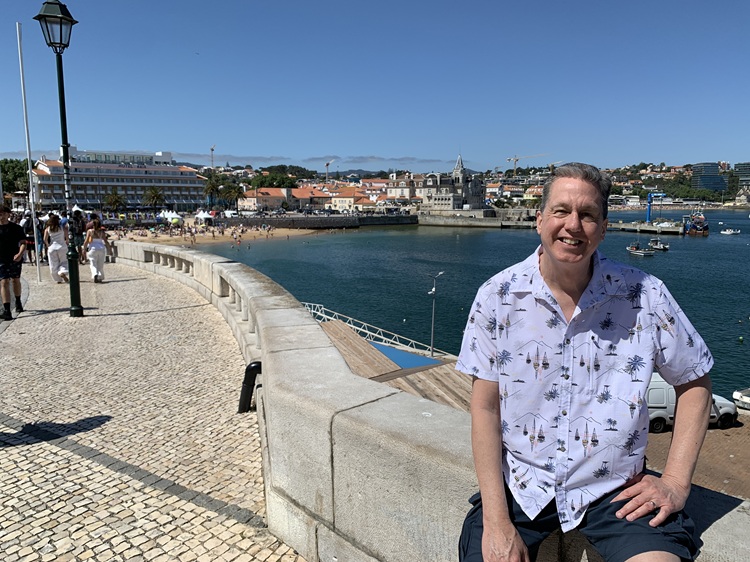
Since our rental was outside the tourist area, we got a better feel for what Cascais is like for people who live there. We shopped in the local grocery stores and ate in a couple of local restaurants.
We arrived at our rental at about 6:00, after almost 20 hours of travel across nine time zones. We were hungry, but we just wanted someplace nearby. We stumbled upon a small place called Café Perola. It had four tables inside and three outside. The menu was written on a chalkboard. The waitress spoke almost no English, but thanks to our extremely limited Portuguese and Google Translate, we made it work.
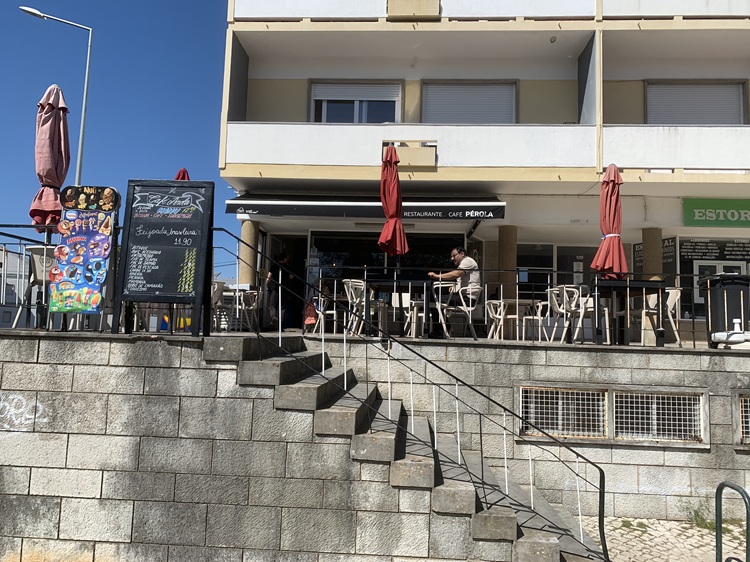
We both ordered Bobó de Camarão, which was a generous helping of shrimp cooked in a yellow coconut-curry sauce, served with rice and farofa (a Brazilian staple made from finely ground yucca root). It was sooo delicious! We thoroughly enjoyed our meal, and at 13.90€ each, it was very reasonably priced.
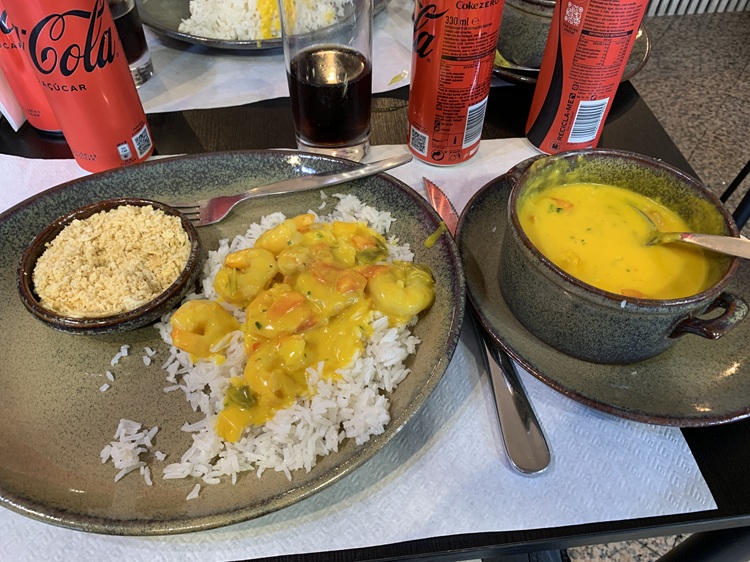
We’re not interested in touristy things. We prefer to visit an area’s art and history museums, parks, gardens, and other unique sights that provide a glimpse of the area’s character. Cascais offered several points of interest.
The Casa das Histórias Paula Rego is often mentioned among the top things to see in Cascais. The building is certainly distinctive, but we didn’t care for Rego’s art at all. It was far too dark, disturbing, and dystopic for our tastes.
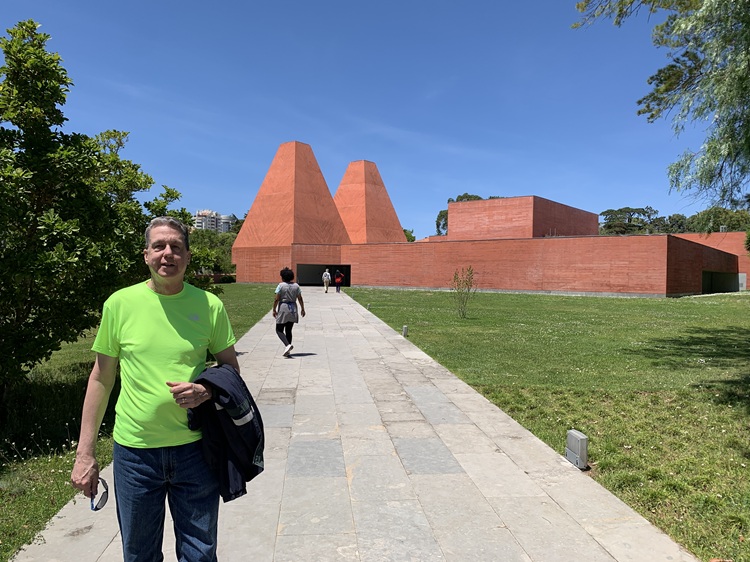
At the nearby Cascais Cultural Center, we enjoyed the extensive exhibition of black and white photography by American photographer Rodney Smith. We had never heard of him, but his photos have been featured in Time, the Wall Street Journal, and the New York Times, in addition to commercial work for BMW, Ralph Lauren, American Express, IBM, and Heinz.
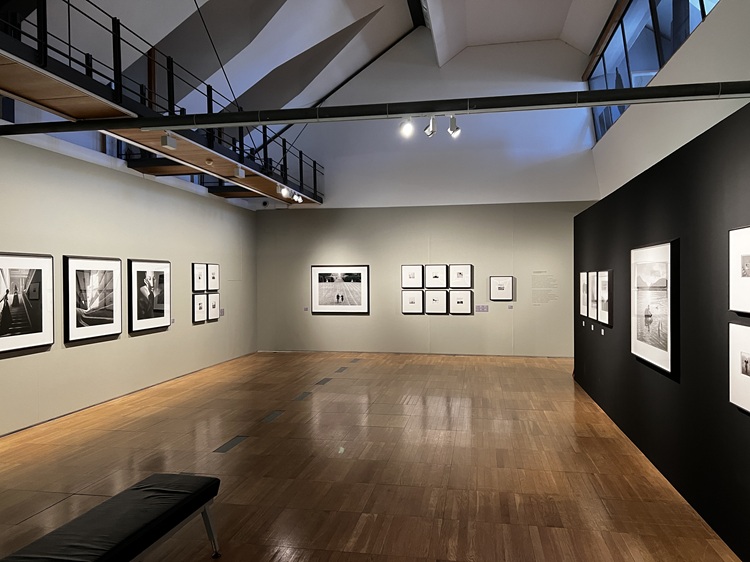
The Museo Do Mar Rei D. Carlos (museum of the sea) and the Museu da Vila (the history of Cascais) were also worthwhile.
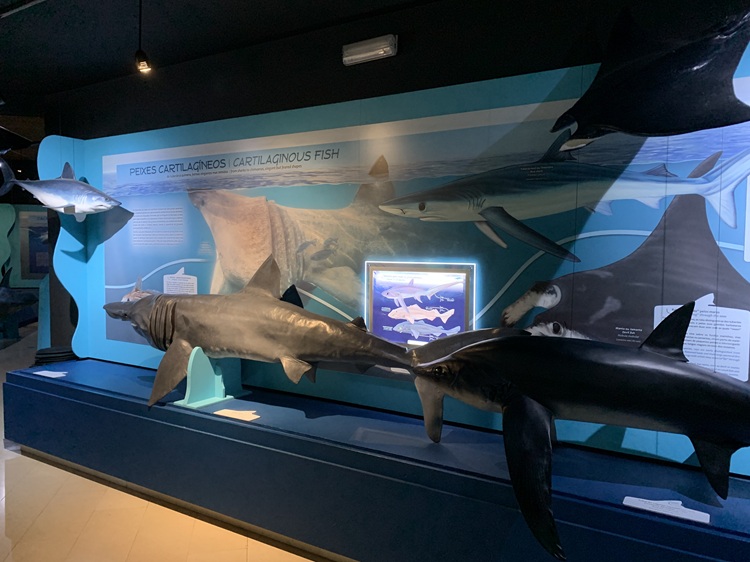
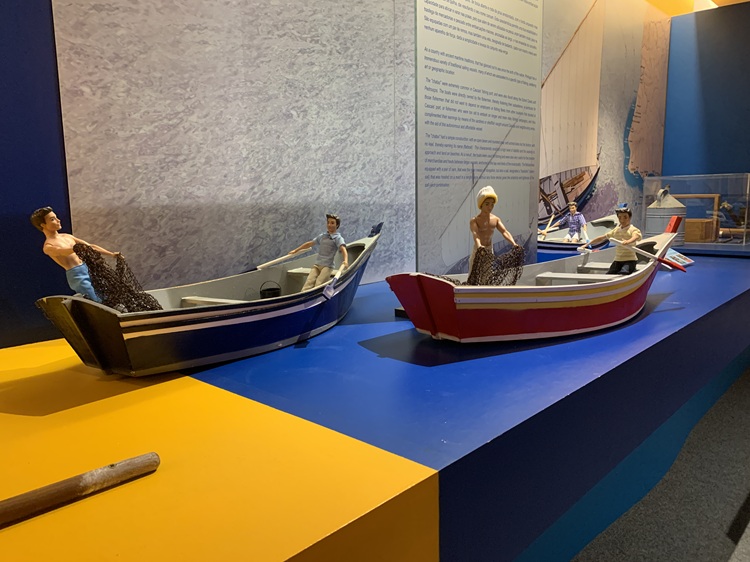
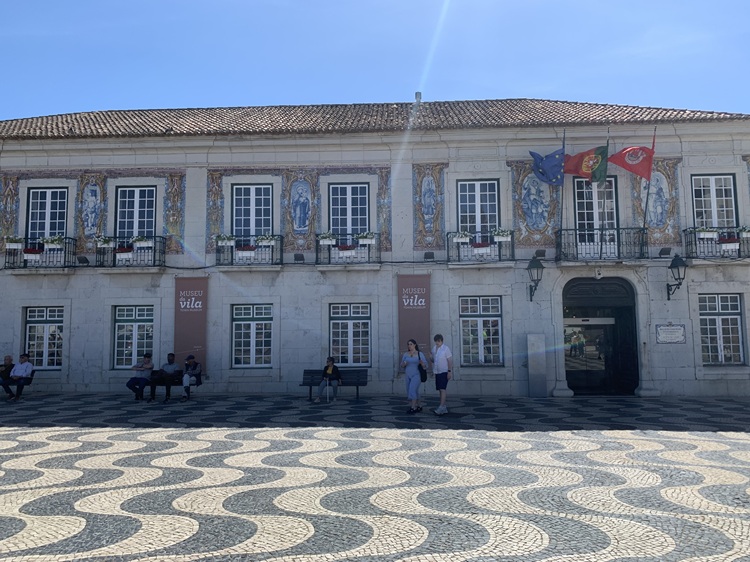

On our second day, we visited the Auchan hypermarket. It’s HUGE. And impressive. They offered huge selections of fresh produce, seafood, meat, wine, and more. Truly a grocery shopper’s paradise! There was a food court on the second floor, and our host, Luis, recommended the Portuguese buffet there, so we tried it. Excellent!
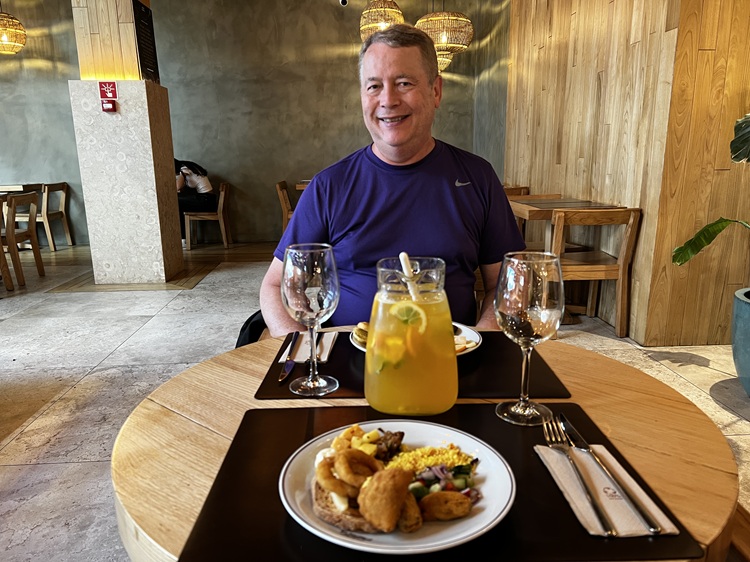
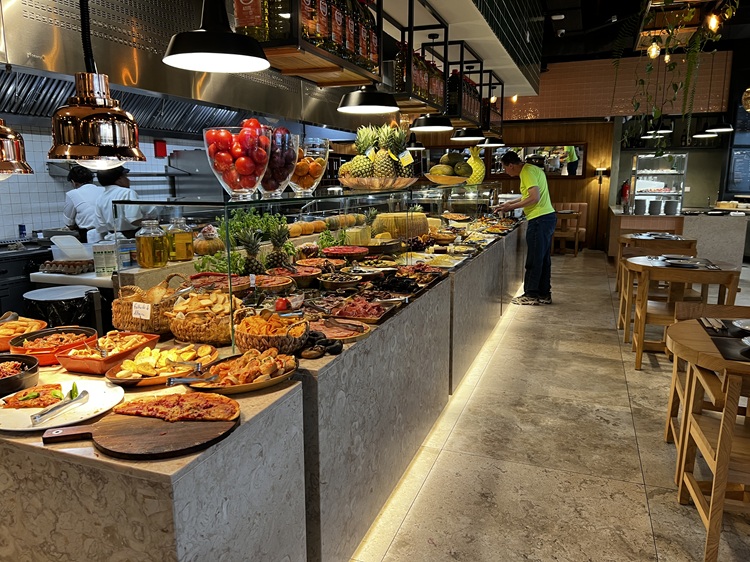
The next day, we walked 2.6 km (1.6 miles, each way) to Boca do Inferno, or Devil’s Mouth, where scenic oceanfront cliffs feature a natural archway and an open cave created by pounding waves. When the ocean is rough, the waves crashing into Devil’s Mouth can be quite spectacular. It was calm on the day we visited, but it was an impressive sight to see, nevertheless.
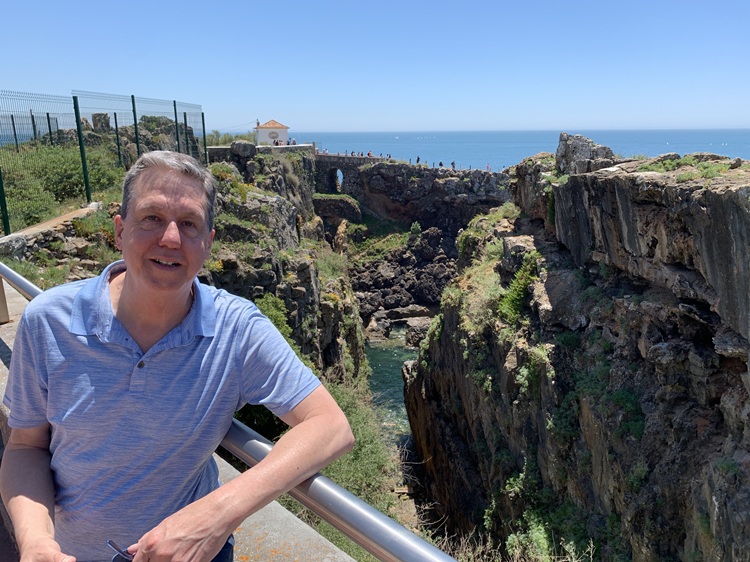
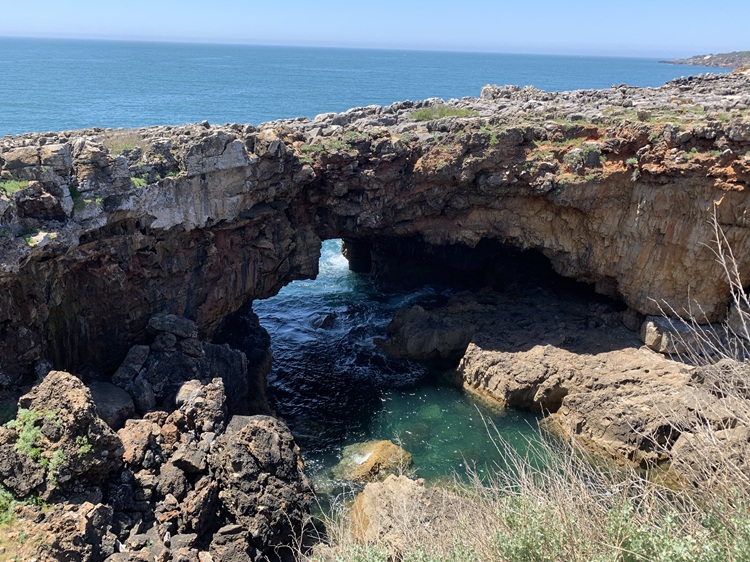
For dinner that night, we chose another nearby place that catered to the locals rather than the tourists. It was called 7Seas Bistro, although there was practically no seafood on the menu other than shrimp tacos, which Jeff ordered. It was a funky, eclectic place, half indoors and half outdoors, with a gravel floor in the dining area. The food and the sangria were delicious. We were pleased with our choice.
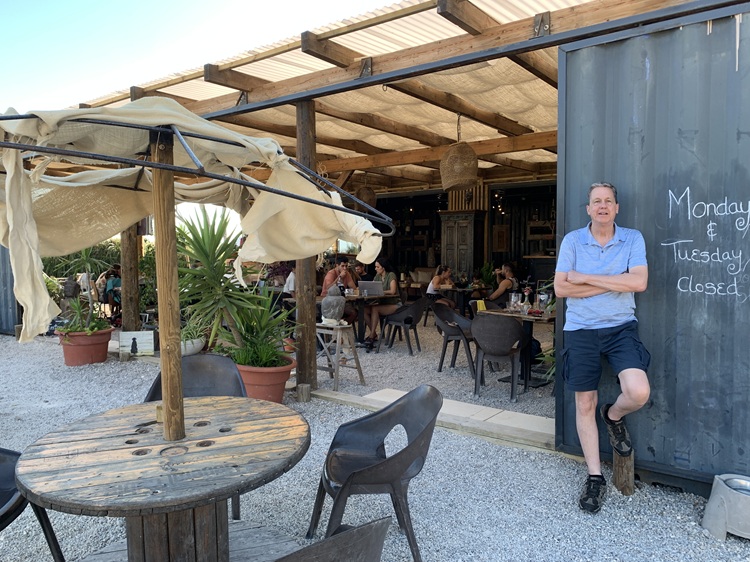
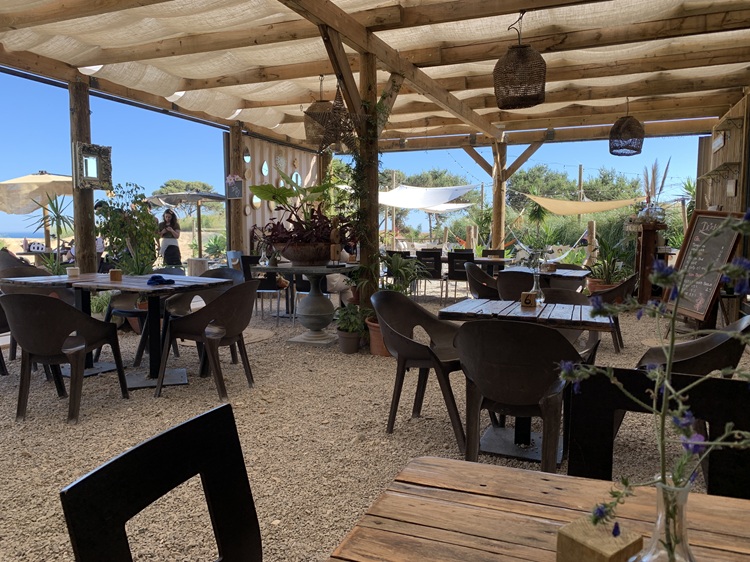
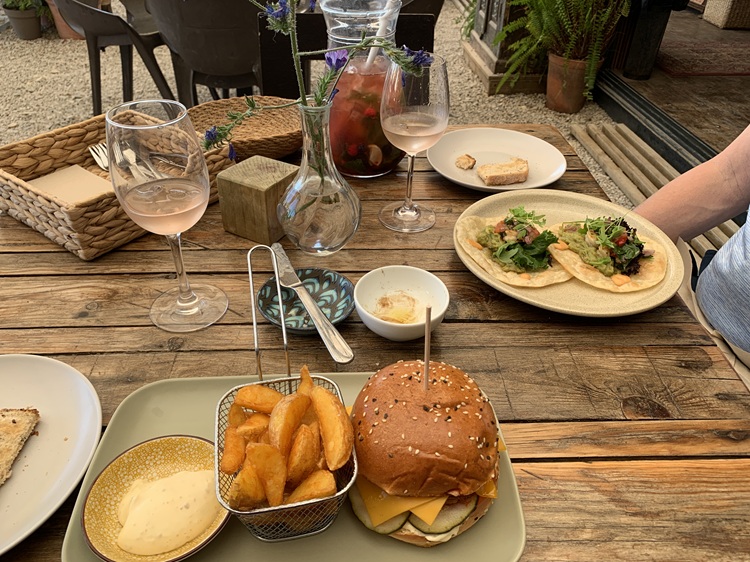
The restaurant was located on the grounds of a small city park called Parque Urbano do Outeiro da Vela. It faced a mountain bike course where young bikers would ride downhill and jump over muguls. It provided unique entertainment during our dinner.
Overall, we enjoyed our visit to Cascais. Will we return? Probably not. We’ve seen everything we wanted to see and experienced the vibe. It’s nice, but not compelling enough for a repeat visit.
Would we live there? No. It is a bit too hilly and compressed for our tastes, and it’s a tourist area. There’s not enough music and culture to satisfy our interests; we would have to travel into Lisbon for that.
There were some nice homes, as well as some more modest apartment complexes. Mixed in with these were some abandoned, dilapidated structures that looked like they were probably impressive properties back in their day. But today, they’re graffiti-covered eyesores.
Speaking of graffiti, it was everywhere. But that’s true of much of Portugal. That’s a real downer for us.
